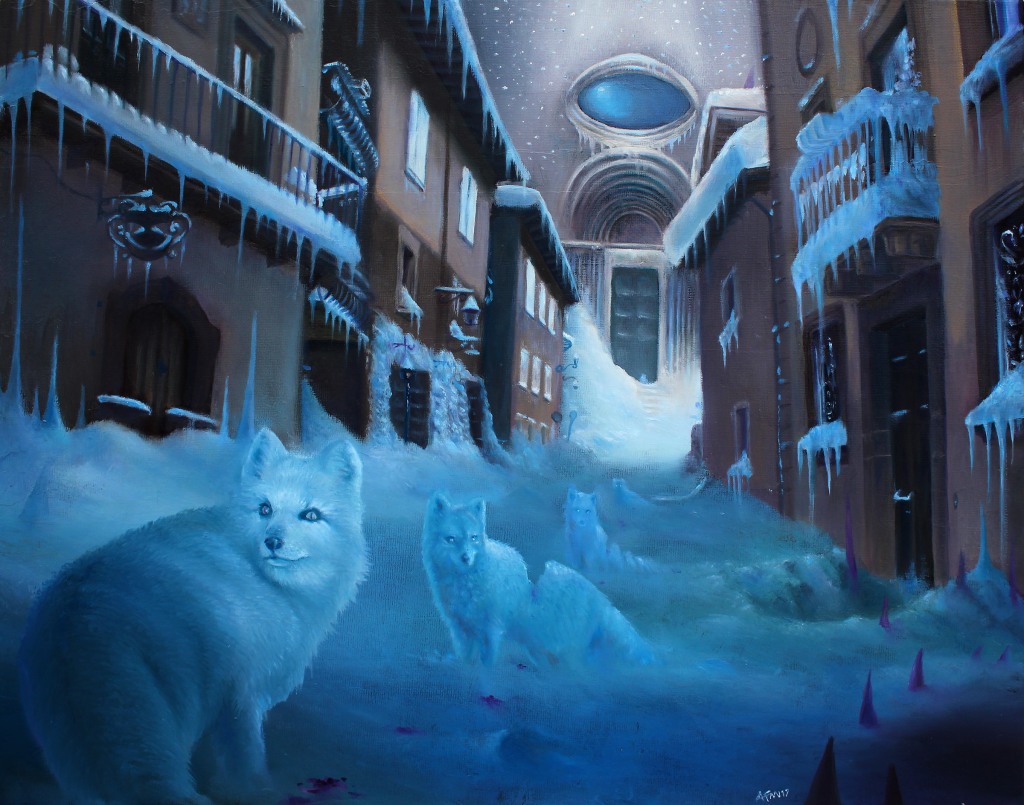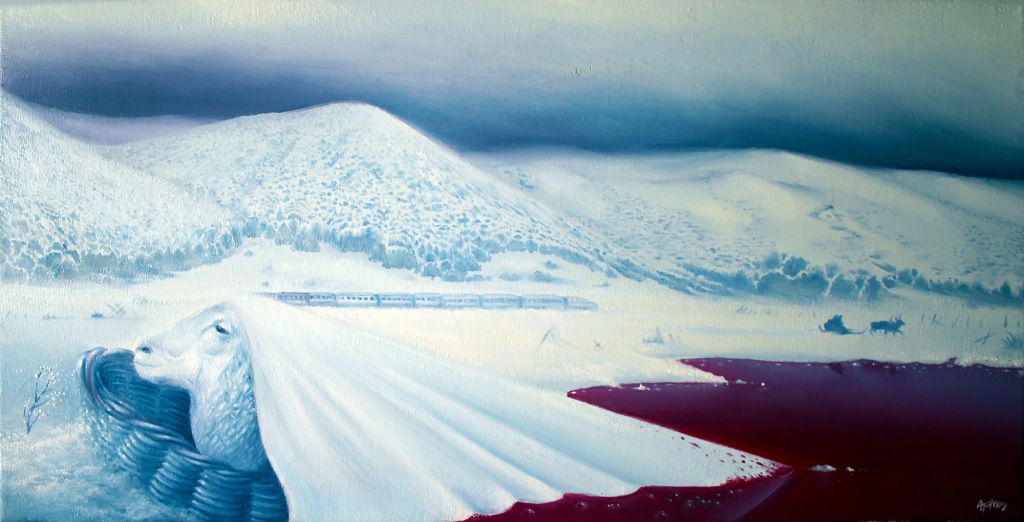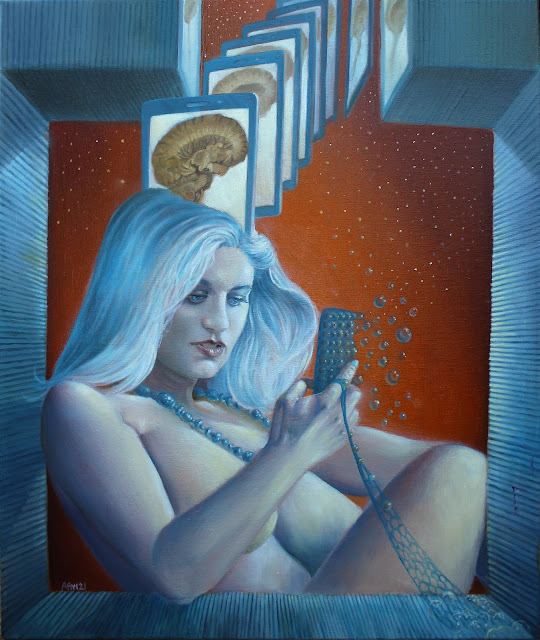The English edition of the sixth AFAN Alessandro Fantini’s novel
“Nurse Blizzard” has been released.
Available now in eBook and
paperback on Kindle and Lulu stores.
AFAN's LULU store:
https://www.lulu.com/shop/alessandro-fantini/nurse-blizzard/ebook/product-7py6gk.html?page=1&pageSize=4
https://www.lulu.com/shop/alessandro-fantini/nurse-blizzard/paperback/product-2p2qzw.html?page=1&pageSize=4
Why still writing a novel in the “social media age”?
In this era of compulsive consumption of video and text fragments, I think the novel remains one of the few expressive forms, along with television series and videogames, capable of convincing people to immerse themselves for several hours in a row in a temporal and spatial flow of pure fantasy. What distinguishes it from other "entertainment" media is the fact it invites the readers to face their own interiority by letting them contribute to the evocation of a narrative and emotional world that doesn’t demean but enhances their imagination and sensitivity. Somehow I find its articulated unreality to be an excellent antidote to the chaotic unreality of the web.

What does the title “Balia Bufera/Nurse Blizzard” allude to?
Even before I started writing, I had a couple of titles in mind alluding to snow, to the theme of early childhood and to snowstorms also known as “blizzards”. It may be also because one of my most vivid and magical childhood memories is that of visiting a village among the Abruzzo mountains covered by almost a meter of snow by night, during the Christmas period. After completing the first chapter and having defined the plot, I realized that the personification of the Blizzard, assimilated to a nurse who nourishes and protects a new life, explained in two words, in both a metaphorical and a literal sense, the concepts around which the whole story revolved.
Who are the protagonists of the novel?
The story is mainly told in first person by Patrizio, an insecure 20-year-old raised by his maternal uncles from the age of three, when his mother decided to rebuild a family abroad, traumatized by his father's escape which took place a few months before his birth. Patrick never fully believed in Uncle Leonidas' version, according to which his father had shirked his parenting responsibilities, while his mother had already fallen in love with another man when she was pregnant. With no points of reference and true friends, once he graduates, Patrizio deludes himself that he can change his life by enrolling in a computer engineering course. But the inability to pay for his studies led him almost by chance to join Tonio and Fabiano, two young thieves for whose thefts he will lend himself as lookout, in the belief that's the best way to rapidly finance the course. However, the thrill of the criminal life will lead him to lose touch with reality. So Patrizio becomes aware of his alienation only when he ends up in prison and later in an isolated family home on a plateau. A place made even more mysterious by its proximity to Mount Crura, an apparently uninhabited village where he will meet a girl who, in turn, is confined to a physical and mental prison.

Is it a thriller, a mystery, a fantasy or a horror?
When I start writing I never try to stay within the borders of a literary genre, nor I think about the ideal age of the readers. I usually plan a novel only when I have collected a series of images and ideas from whose association I feel it’s possible to derive an atmosphere and a tension so deep and effective to keep me glued to the keyboard in the same way I am convinced the reader will be captured by the finished book.
Who are the authors and the places that influenced the novel?
In addition to childhood memories of the snow-covered plateau of Quarto Santa Chiara in Abruzzo, the first images that spurred me to write "Nurse Blizzard" were the illustrations by the Dutch Rien Poortvliet, the author of the famous series of late ‘70 books on “Gnomes” created with Will Huygens. I have always thought those visions could express a dramatic and fateful quality if placed in a realistic and familiar context such as that of the winter of the Abruzzo Apennines. Even more so if imbued with the suggestions of weird stories of witchcraft by a Gothic author like Arthur Machen, whose short story "the White people", published in 1904, represented an important source of inspiration for the novel.

What criteria did you follow in translating the novel from Italian?
The secret of a translation work is to be faithful to the original text by betraying it without being noticed. In this case, the process has been made a little more easy by the fact I’m also the author of the original novel written in Italian in 2017, therefore I've been more aware and confident into applying the (more or less) slight tweaks needed to render the proper English equivalent of the slang and idiomatic expressions of the characters, thus preserving the prose pace and the onomatopoeic suggestions so essential to the peculiar mood of the story. Even though being able to exert so much creative freedom on every aspects of a book, is the “self publishing” feature I appreciate the most, translating my novels hasn’t just the aim to broaden the pool of my readers, but to hopefully gain also the attention of publishers who don’t believe (like many in Italy) that only soccer players, influencers, actors and TV showmen are worthy of being “published”.
Is the story of Balia Bufera limited to the literary form?
The story of Patrizio, the family home of Santa Pelva, Monte Crura and its enigmatic inhabitants is the final estuary of a large number of visual and literary tributaries, so it is by no means excluded that it may extend or continue in other artistic codes, first of all the cinema one. While writing the novel I’ve created a screenplay conceived according to the locations of Pescostanzo town and the nearby plateau of Quarto Santa Chiara, a method that allowed me both to consolidate the realism of the novel and to lay the foundations for a second life of the novel. Which is one of the crucial meanings hidden in the novel's title and plot. Because everyone needs a second chance after having been at the mercy of the storm, or better said, the “blizzard”.

















